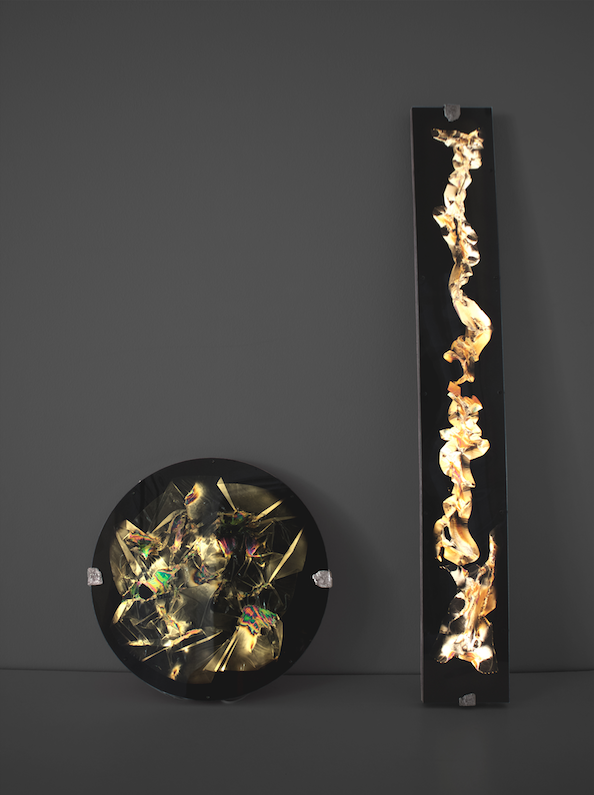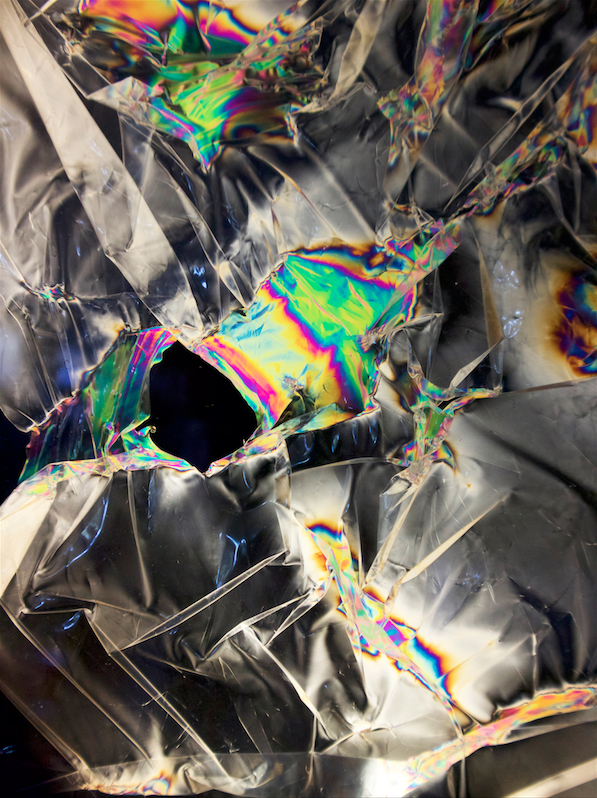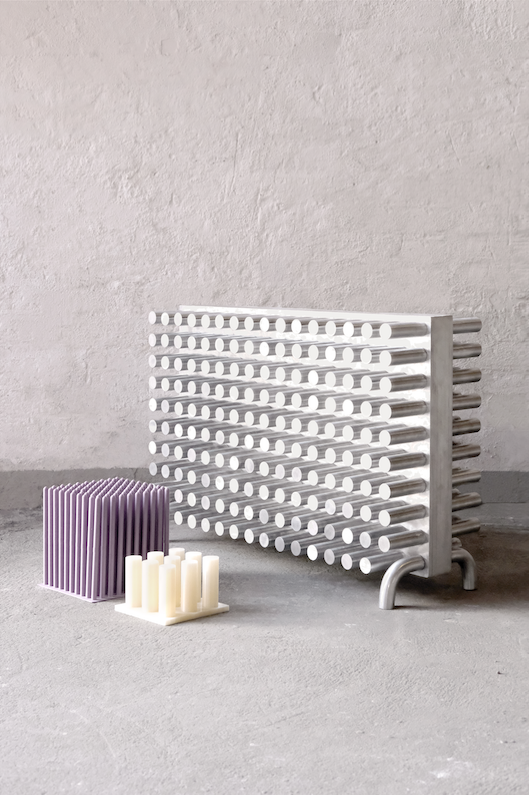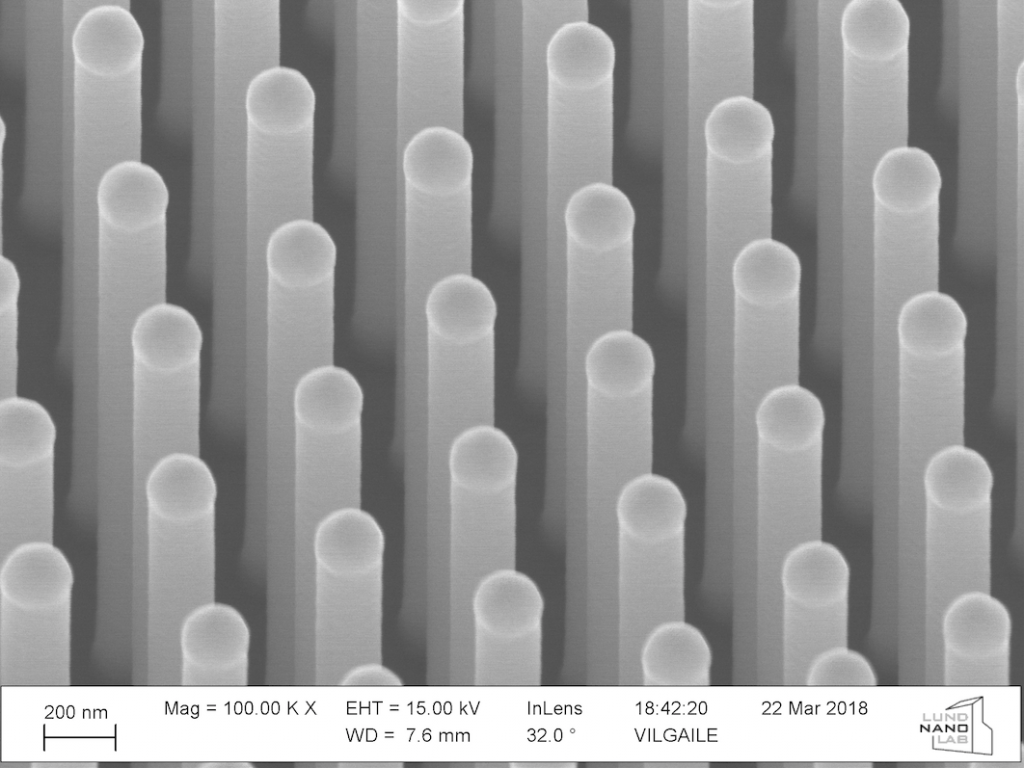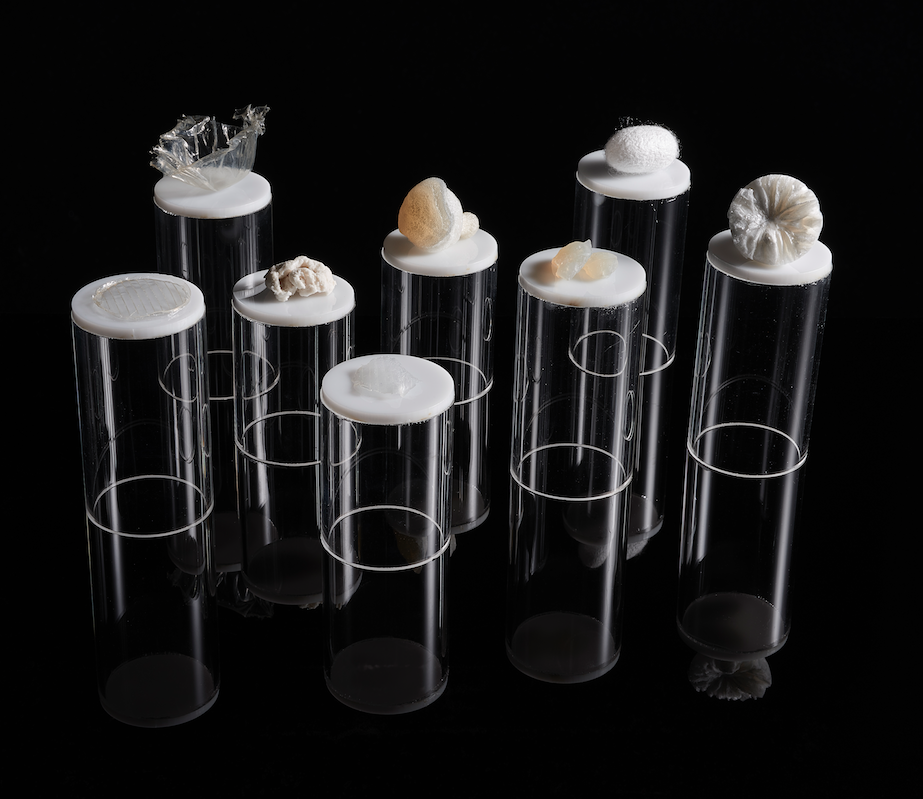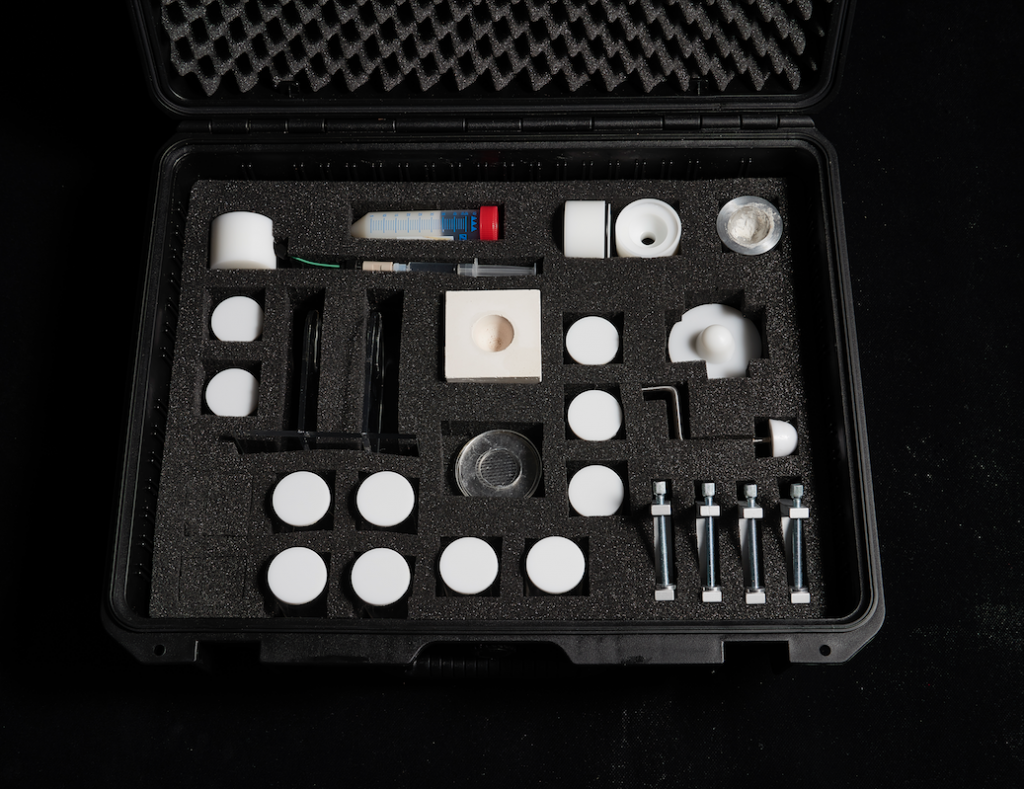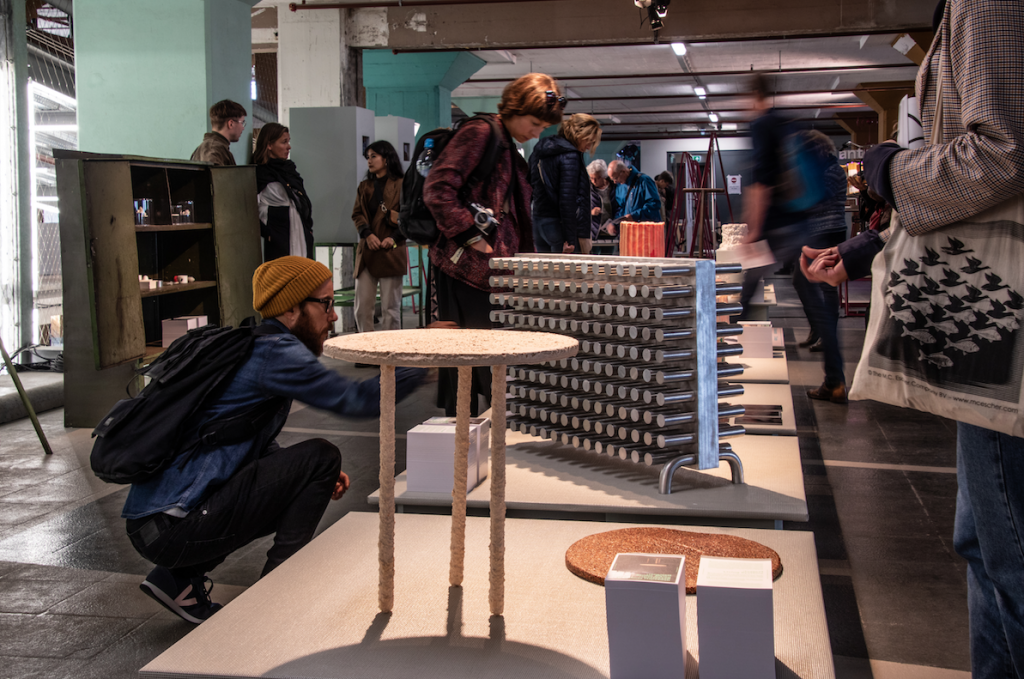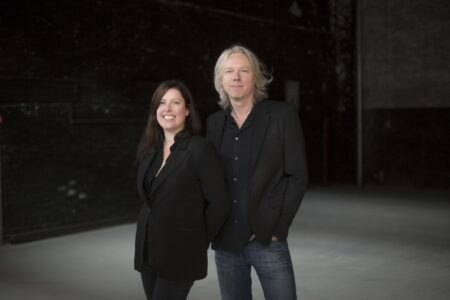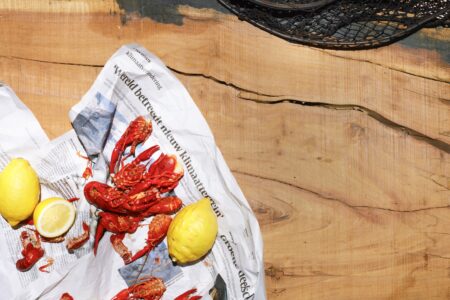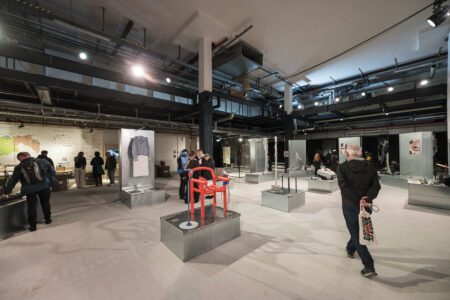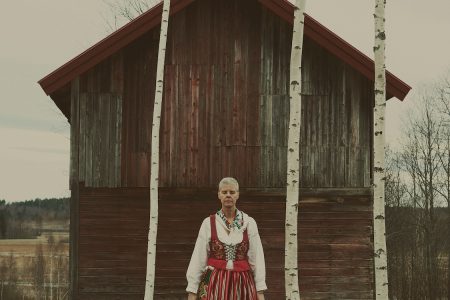
10 Encounters Between Science and Design
What happens when designers and scientists meet to develop new materials? Find out at ‘What Matter_s’ an exhibition about cross-disciplinary practice
10 design studios + 10 material researchers + 6 months = ???
This was the equation that resulted in the exhibition What Matter_s at Dutch Design Week 2018. The exhibition shows the results of a research project which paired 10 design studios with 10 researchers and scientists as an experiment to discover the potential of cross-disciplinary collaborations in creating new, sustainable and innovative materials. Curated by Nina Warnolf, the exhibition is a collaboration between Southern Sweden Creatives, Form/Design Center, SPOK and Art and Science Initiative.
The What Matter_s project was started by a group of designers in response to their frustration that, although they live in southern Sweden which is renowned for its material research and universities, there was no access to this research. “As designers, we never get to see these materials!” designer Jenny Nordberg tells TLmag. So they asked themselves “Can’t we try to meet some of these researchers, just to see what can happen?”
The outcome of this intensive endeavor is a series of projects that hint at what could be possible if this way of working was pursued as general practice. Materials that were explored range from the natural and ancient such as chitin, hemp and spider silk to the synthetic and hypermodern which include bioplastics, nanowires and graphene. One project, Artificial Intelligent, even uses the abstract “material” of algorithms.
Arguably the most industrial in its approach is Array – a freestanding radiator that functions without any electricity or gas. This remarkable feat was the results of a collaboration between spatial and furniture designer Amy Wang, architect Tim Söderström and nanotechnologists Professor Magnus Borgström and Dr. Vilgailè Dagytè. The chunky metallic radiator hides Phase Change Materials and nanowires inside its geometric body which absorb and disperse heat in reaction to changing air temperatures. This project is particularly exciting in that it shows that with new material functions there is also the possibility to develop new visual languages and reimagine the archetypes of existing products.
In a very different outcome, the project Polarised Portraits sits more in the realm of art. The two works, Fallen Planet and Strip, were created by designer Kajsa Wilner and Professor Dmytro Orlov who specializes in understanding the properties of different metals. The pair utilized the characteristics of polarised light – an optical phenomenon that occurs when waves of light oscillate in a single plane – to transform a disposal fruit bag and packaging film into two illuminated design pieces that seem to come from another galaxy.
Other projects being presented show a range of samples rather than final pieces which create compelling cases for what is to come. Silk Lab, by industrial designers Andreas Kojcevski Hansson and Siri Skillgart and soft biomaterial specialist Dr. Cedric Dicko, is a series of experiments with liquid silk. It examines how this fluid version of silk can be cast into new forms.
Meanwhile, Gleather Glubber presents a range of colorful samples which represent six months of developing and testing bioplastic made from wheat-derived gluten. Created by designer and curator Petra Lilja and Dr. R. Kuktaite, who is an assistant professor at the Department of Plant Processing in the Swedish University of Agricultural Sciences, the tactile samples suggest starting points to a range of applications.
Another bioplastic project was the plant pots called MATching developed by designer Kunsik Choi and Professor Ranji Hatti-Kaul who explores biomaterials and green chemicals.
Medical material was another field that a designer dived into. Industrial designer Jenny Nordberg and Professor M. Tägil question what would happen if the material used for bone healing in vivo (within the body) was used outside of the body. Building on Prof. Tägil’s research as part of the Smart Bone Project, Nordberg created a 3D printer called In Vitro Printer that is controlled by hand and uses no electricity. To illustrate this process she made three vessels where she shaped this collagen-esque material into bone-like structures in which each layer of her vessels bond with themselves.
Although just a little exhibition, with 10 projects on display, What Matter_s opens a world of possibilities. Not only does each project feel like it could be expanded upon in many directions, but the exhibition also sets out a working model for cross-disciplinary practice that bridges that gap between science and design. It concretes the idea that we must look outward and forward for new material solutions rather than relying on old and damaging systems of production.
What Matter_s will be on display at Dutch Design Week until October 28
Cover image: Gleather Glubber at What matter_s at Dutch Design Week. Photography by Marina Jackler
